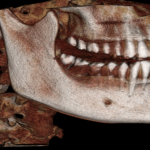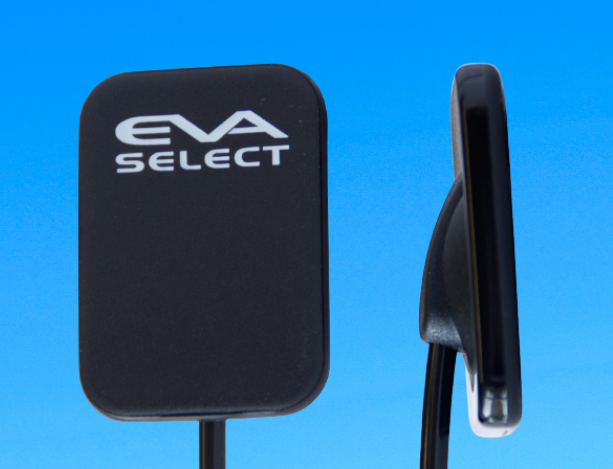Here’s a case showing how Dr. Warr used the X-era to quickly address a post op sinus infection, and he discusses what may have happened if he had to outsource the cone beam scan.
Subscribe to Receive More Great Articles
Subscribe to Receive More Great Articles
Subscribe to Receive More Great Articles
Subscribe to Receive More Great Articles
Subscribe to Receive More Great Articles
Subscribe to Receive More Great Articles
 Senate Democrats are proposing a budget provision that will allow Medicare to include coverage of dental, vision and hearing expenses. If this provision were to be included in the budget, many believe this would be one of the biggest changes to Medicare since the program’s inception. More specifically, the dental component, which is the largest portion of the provision, would have a ripple effect that could touch all aspects of the dental industry.
Senate Democrats are proposing a budget provision that will allow Medicare to include coverage of dental, vision and hearing expenses. If this provision were to be included in the budget, many believe this would be one of the biggest changes to Medicare since the program’s inception. More specifically, the dental component, which is the largest portion of the provision, would have a ripple effect that could touch all aspects of the dental industry.
The provision to cover dental, vision, and hearing coverage is expected to cost about $350 billion over 10 years.
Insurance companies are generally opposed to the provision, as many Americans who purchase dental insurance plans will move to Medicare coverage, thus causing a loss of revenue for insurance companies.
Many feel that there could be an adverse effect on dentists, as Medicare would likely create lower payments for a myriad of dental services. Furthermore, even if a dental professional doesn’t take Medicare, it is possible that Medicare’s involvement in dental services will create downward pricing pressure for all dental professionals.
The ADA has publicly stated that instead of providing this coverage to all those who are eligible for Medicare, they are pushing to limit coverage to those seniors who are in the lowest income bracket. Specifically, they are endorsing putting a limit on eligibility to those seniors whose income is less than three times the federal poverty line.
AARP is supportive of the provision as it increases benefits for seniors. Some groups are also lobbying that there are other more critical medical services should be covered instead of dental, vision, and hearing. Others are advocating for a phase-in of the benefits over time.
The overall budget requires approval from both chambers of Congress by a simple majority. While this is not the first time that Congress proposed to include these benefits into Medicare, many feel that this is the closest it has come to enactment since Medicare’s inception due to the slim majority that Democrats hold in both chambers. However, for the budget to pass, it would require most Democrats in the House, and all Democrats in the Senate to vote for it.
If agreed upon, the bill would go into effect in the fall.
Subscribe to Receive More Great Articles
Subscribe to Receive More Great Articles
Subscribe to Receive More Great Articles
In our experience, we have seen doctors take a wide variety of approaches to how they charge for the dental cone beam scans. Clearly there are a number of variables that would affect the pricing strategy including specialty and the intent of the scan. However, we will provide some thoughts from a few General Dentists, which are the more common dental professional that we work with.

One particular general dentist has set up their pricing strategy based on the FOV of the scan. Because the X-era offers a number of different fields of view, here is his approach:
If the patient opts to move forward with an implant treatment, that scan may be offered complimentary.
We have also seen scenarios where the dental professional may identify some pathology via a traditional 2D modality like an intraoral periapical or a panoramic x-ray. The dental professional may deem that the cone beam scan will not only provide critical additional information to improve confidence in the diagnosis, but it will also allow for a more detailed treatment plan.
In these situations, we have heard from some doctors who may decide not to charge the patient for the scan. They may waive this fee in these scenarios because they feel the cone beam scan will help them:
In these unique cases, they may decide that these alternative benefits are immediate enough to preclude the need to charge the patient.
While every dental professional must decide what right for their practice, these are a few approaches that may be helpful. We would love to hear your thoughts!
 At ImageWorks, we have helped many thousands of dental professionals optimize their digital imaging, and here is a common scenario:
At ImageWorks, we have helped many thousands of dental professionals optimize their digital imaging, and here is a common scenario:
The office has a digital intraoral system, and they need to add a sensor. They don’t want to overpay for a name brand sensor. However, they need to make sure the staff will be able to efficiently capture great intraoral images.
Therefore, they are looking for a sensor that not only works well, but also works well with their existing software.
To find the right sensor for this office, there are obvious aspects to consider like image quality of the sensor and support from the provider. However, there are two often overlooked aspects that can help an office save money on a sensor system without sacrificing quality or workflow efficiency.
Does the sensor slow the hygienist down during the capture sequence?
Many 3rd party sensors may be able to capture an image into your imaging software. However, during multi-image capture sequences (e.g. a bitewing study, FMX, etc) many of these sensors will require the hygienist to click in the software after capturing each image.
For hygienists, capturing intraoral images is already a complex process with many moving parts. Further difficulty arises with a patient that may be in some level of discomfort during the process. As a result, using a sensor system that requires the hygienist to also click on the PC in between every exposure may make both the staff and the patients very grumpy.
Does the sensor offer image optimization filters?
This is an important and sometimes overlooked capability for a few reasons. First, it’s worth noting that filters play an important role in the resulting image quality of every sensor. A sensor that has poorly applied filters will result in a poor image no matter how great the sensor is.
Second, many times the imaging software cannot (or will not) apply any filters to the image captured with a 3rd party sensor. As a result, the sensor must have its own filter capability to assure the resulting images will reflect the true quality of the sensor.
If you want to maximize your ROI with a sensor that is going to give you fantastic images, give us a call to see how we can help you.
Learn more about the Eva Select Dental Sensors from ImageWorks